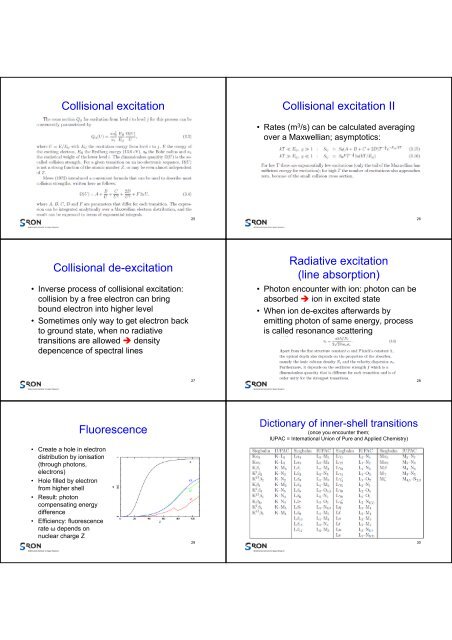X-ray spectroscopy (PDF) - SRON
X-ray spectroscopy (PDF) - SRON
X-ray spectroscopy (PDF) - SRON
Create successful ePaper yourself
Turn your PDF publications into a flip-book with our unique Google optimized e-Paper software.
Collisional excitation<br />
Collisional excitation II<br />
• Rates (m 3 /s) can be calculated averaging<br />
over a Maxwellian; asymptotics:<br />
25<br />
26<br />
Collisional de-excitation<br />
• Inverse process of collisional excitation:<br />
collision by a free electron can bring<br />
bound electron into higher level<br />
• Sometimes only way to get electron back<br />
to ground state, when no radiative<br />
transitions are allowed density<br />
depencence of spectral lines<br />
Radiative excitation<br />
(line absorption)<br />
• Photon encounter with ion: photon can be<br />
absorbed ion in excited state<br />
• When ion de-excites afterwards by<br />
emitting photon of same energy, process<br />
is called resonance scattering<br />
27<br />
28<br />
• Create a hole in electron<br />
distribution by ionisation<br />
(through photons,<br />
electrons)<br />
• Hole filled by electron<br />
from higher shell<br />
• Result: photon<br />
compensating energy<br />
difference<br />
• Efficiency: fluorescence<br />
rate ω depends on<br />
nuclear charge Z<br />
Fluorescence<br />
29<br />
Dictionary of inner-shell transitions<br />
(once you encounter them;<br />
IUPAC = International Union of Pure and Applied Chemistry)<br />
30
















